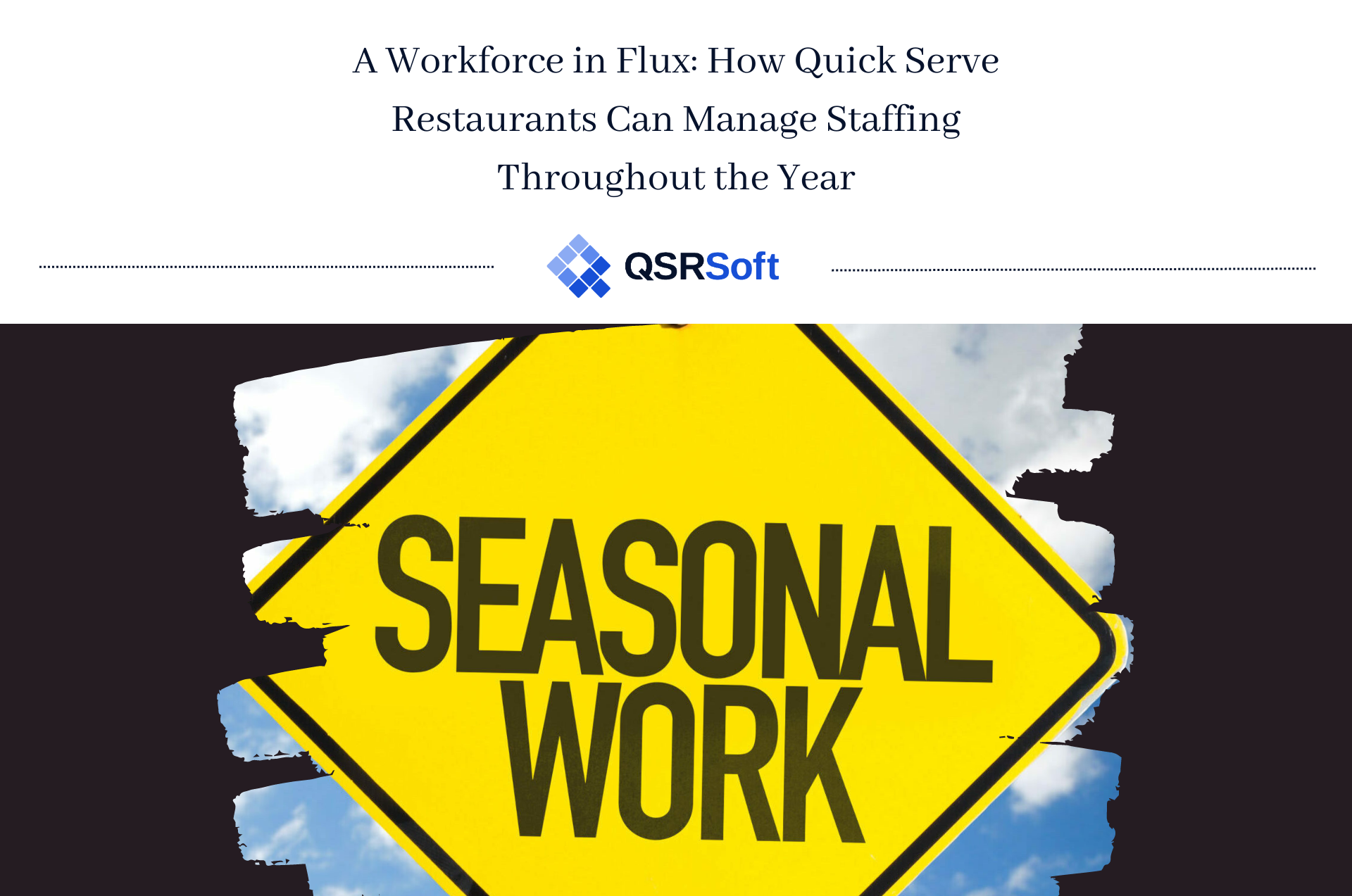- Embrace Change: Don’t try to fight the flux. When you expect and plan for change, you aren’t surprised by staff coming and going and you can adapt faster. Don’t waste valuable time and energy being frustrated by it.
- Always be hiring: While you may not actually bring people on the payroll all the time, you should be always looking out for great employees. Statistics show that a great employee is up to 10 times as productive as a mediocre employee. When you meet people who could be good options, keep them in mind for future roles. Interview people regularly so you have a regular pool of quality applicants you can offer positions to. A staffing needs predictor like the QSRSoft Staffing Needs Analysis tool can help you understand and stay on top of your staffing level needs.
- Reward Loyalty: Statistics show that a business with engaged employees can experience 41% less employee absences, 59% less turnover and up to 21% increased profitability. It’s important to understand and motivate your engaged employees. These may be longstanding employees who aren’t coming and going like seasonal employees. They may be employees with great attitudes who are willing to jump in and fill in holes in staffing. Consider giving these employees priority when it comes to their availability and schedules. Have honest conversations with them to better understand what they need and want throughout the year. Some may appreciate a little more time off while their own kids are home from school in the summers, while others may still need the full hours they’re used to. Honest conversations help you get clear on that and support your loyal employees.
- Go Part-Time: Consider hiring some part-time employees that can help you fill in the gaps in your scheduling needs. They also manage risks because if some don’t work out, you have others that you can rely on. You can start these employees at a lower level of responsibility and add as you see they can handle more.
- Think Outside of the Box: Don’t focus on just one demographic of ideal employees. While traditionally, quick-serve restaurant employees may fit in a certain mold, you never know someone’s life situation and who might make a great employee. In today’s “Gig” economy, some folks are looking for supplemental income while some are looking for a career, and some may just be extroverted and need something to keep them busy. Be open to hiring people from all backgrounds, ages, and abilities. You never know where your next great employee may come from!
- Share your employees across locations: Don’t think of only using employees in one location. Allow employees to work in several of your multiple locations to help fill in scheduling and staffing holes. QSRSoft Work Force Management provides all the tools needed to manage employees working in several locations in any given week.
- Manage like a Pro: Franchise owners understand the power of technology and tools that can save you time – especially when it comes to staffing and scheduling. That’s why QSRSoft’s Workforce Tools are so helpful for franchise owners. You can easily manage your scheduling needs across multiple locations, see when employees are available, can fill in the gaps based on geography. As your scheduling needs are constantly changing throughout the year, the QSRSoft Workforce Tools are your scheduling best friend!
A Workforce in Flux: How Quick Serve Restaurants Can Manage Staffing Throughout the Year

September 6, 2022
As the school year starts back up, summer employees head back to school and may not return except for the holiday season and potentially a spring break. Suddenly, you may find yourself with more holes in your staffing and scheduling than you would like. Throughout the year, your staffing needs and available workforce may look drastically different. Staffing is a major concern for quick-serve restaurant owners and one that affects your day-to-day operations and bottom line.
Keep up with the ever-changing staffing needs of your restaurant with a few simple tips:

